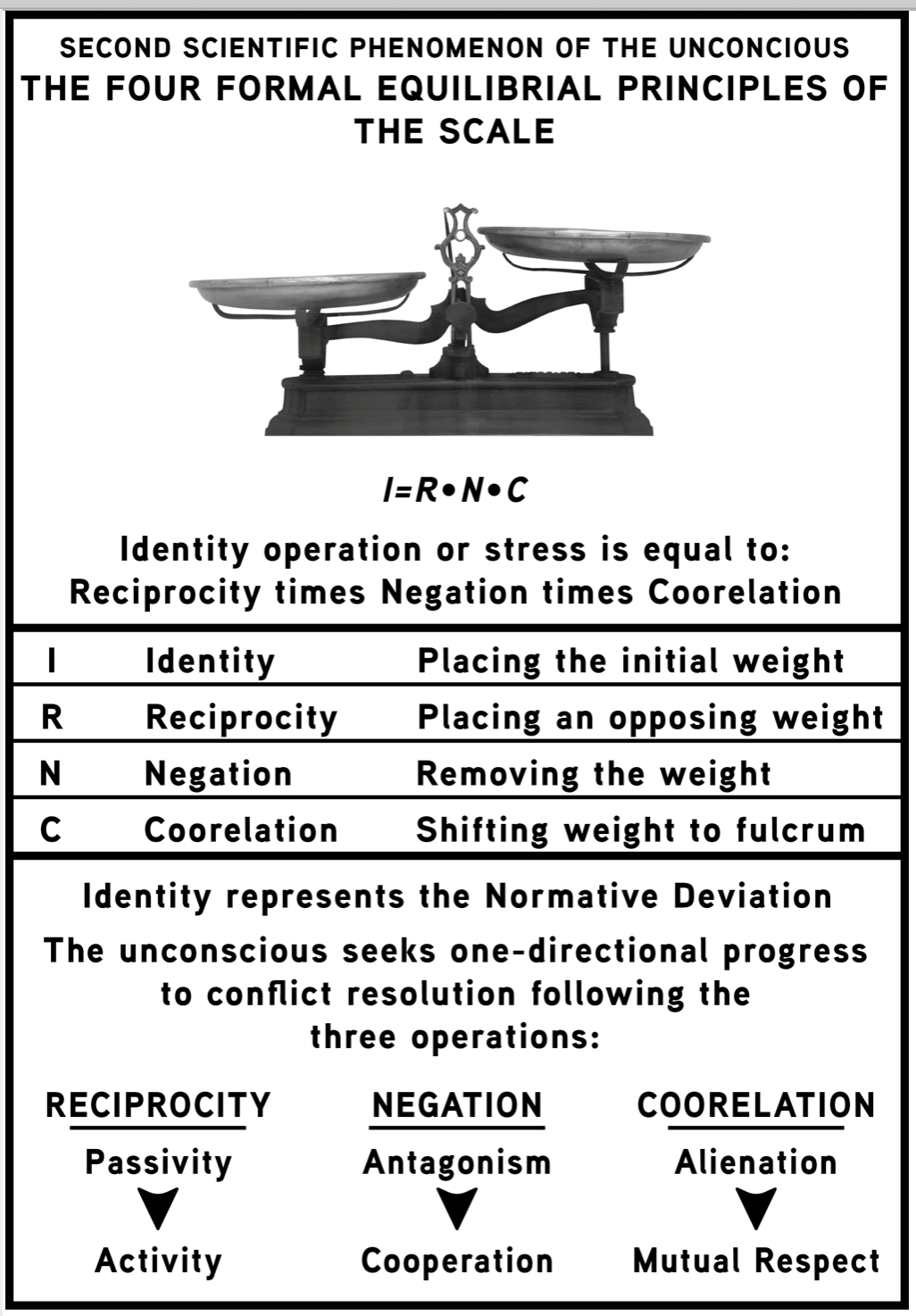The Premise of the Formal Theory
The Formal Theory proposes that emotions are energetic entities and that the unconscious functions as an innate physiological mechanism designed to resolve conflict. This mechanism transforms unpleasant emotional tension — experienced as psychic distress — into resolution and moral growth.
Clinically, these resolutions manifest as relief, expressed through changes in attitude and improved social adjustment.
By identifying the energetic structure of the unconscious, the Formal Theory introduces two scientific phenomena into the study of the conflict-resolution process:
The Six-Emotion Chain Reaction — corresponding to three pendulum oscillations, representing the rhythmic transformation of emotional energy from stress to compromise.
The Four Types of Conflict Resolution — corresponding to three formal equilibrium operations, symbolized by the balancing of the trays of a scale, restoring emotional and relational harmony.
The Scientific Function of the Unconscious
The two scientific phenomena introduced by the Formal Theory explain how the unconscious resolves conflict.
The first, Simple Harmonic Motion (SHM), captures emotional energy;
the second, the Formal Operations of the Scale, transforms that energy into moral order.
The conflict-resolution sequence begins with a state of passivity, antagonism, and alienation, and culminates in a resolution characterized by mastery, cooperation, and mutual respect.
Just as chlorophyll in plants captures sunlight and converts it into growth, the unconscious captures the energy of emotional stress and transforms it into moral growth through the process of catharsis, or psychosynthesis.
The First Scientific Phenomenon: Simple Harmonic Motion
The first phenomenon, Simple Harmonic Motion, describes how emotional energy moves in rhythmic oscillations as the mind seeks equilibrium. A conflict begins as a pendulum deviation from a point of rest, generating tension that sets the emotional process in motion.
This motion unfolds as a six-emotion dialectic, corresponding to three pendulum oscillations — the natural rhythm through which the psyche converts conflict into resolution.
Through the Conflict Analysis Battery (CAB), participants identify these six emotions and reconstruct the three oscillations of their emotional dialectic. The results form what we call a syndrome — a connected chain reaction of emotions that collectively move the individual toward psychological balance and moral resolution.
The Second Scientific Phenomenon of the Unconscious
The Equilibrial Scale and Its Three Formal Operations
The second scientific phenomenon identified by the Formal Theory is the Equilibrial Scale, representing the unconscious mind’s capacity to restore emotional and social balance after conflict.
Just as a scale regains equilibrium when weight is properly distributed, the unconscious restores inner harmony through three formal operations — Reciprocity, Negation, and Correlation. Each operation performs a distinct corrective function that alters one’s internal dynamics and interpersonal orientation:
Reciprocity — restores the balance of power, shifting one’s stance from passivity to activity.
Negation — transforms one’s attitude, converting antagonism into cooperation.
Correlation — harmonizes the intensity of emotional energy, changing alienation into mutual respect.
Together, these operations reestablish the rest state—the psychological equilibrium disrupted by conflict—by transforming emotional energy into moral order through attitude change.
The Four Relational Modalities
The first two operations — Reciprocity and Negation — interact to produce four alternative types of conflict resolution, determined by the combination of power and attitude:
Dominant Cooperative
Submissive Cooperative
Dominant Antagonistic
Submissive Antagonistic
These four relational modalities define a personality typology that serves as a set of wellness diagnoses, each representing a particular strategy of emotional and social adjustment.
Knowing one’s relational modality is essential for understanding how one engages with others and for cultivating healthier, more balanced relationships.
Assessing the Structure of the Unconscious
The Conflict Analysis Battery (CAB) employs two complementary instruments to identify each individual’s mode of conflict resolution:
The Personality Inventory — determines one’s relational modality, identifying their characteristic way of managing power and attitude in relationships.
The Creativity Exercises — reveal one’s emotional syndrome, the six-emotion chain reaction of stress, response, anxiety, defense, reversal, and compromise.
Together, these tools measure the energetic and relational structure of the unconscious, providing a comprehensive diagnostic, didactic, and therapeutic understanding of how each person transforms conflict into resolution.

